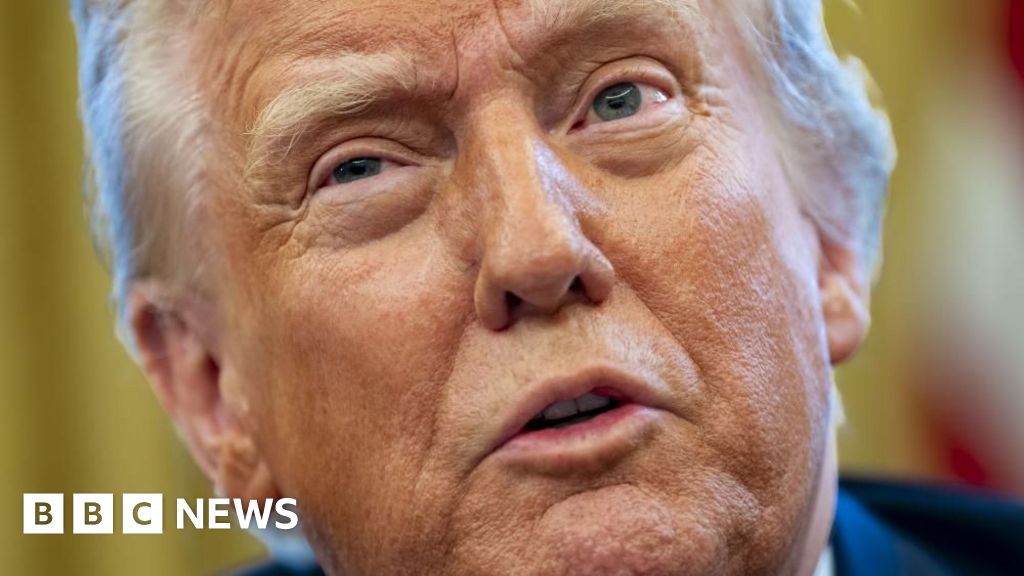For the first week of Donald Trump’s presidency, tariffs – a favourite talking point during last year’s presidential campaign – were the dogs that didn’t bark.
Trade seemed to take a back seat while the new administration pressed ahead on immigration enforcement, pardons of Capitol riot convictions, a fossil-fuel energy policy and federal workforce upheaval – among a range of other disruptive new measures.
That all changed this past weekend when Trump announced sweeping 25% tariffs on US allies Canada and Mexico, along with 10% duties on Chinese imports.
And while he has since delayed imposing those tariffs on his North American neighbours for a month after both countries agreed new border measures, the president still faces a moment of reckoning in which he will ultimately have to decide whether to match his rhetoric with action.
Trump often talks of the trade deficits between the US and its two neighbours as a key source of his dissatisfaction. If that’s the case, then no amount of new border security or drug seizures – whatever the metrics or specific demands – will make the president fully abandon his tariff threats.
Trump has also said he views tariffs not just as a tool to achieve policy objectives, but as a permanent source of US revenue and a means to fund government programmes and reduce the budget deficit. And if that is his ultimate objective, then tariffs on America’s largest trading partners may be the only effective answer.
Global financial markets reeled at this prospect on Monday, as the US appeared on the brink of waging a multi-front trade war with some of its closest economic partners.
Then, after conversations with Mexican President Claudia Sheinbaum and Canadian Prime Minister Justin Trudeau, Trump put the tariffs on pause. While the new duties on China have gone into effect – and have prompted retaliatory measures from Beijing – markets have viewed those US moves as less disruptive and smaller in scope.
By contrast, if US had engaged in an escalating series of tariffs with Canada and Mexico, which accounted for more than $1.57tn (£1.24tn) in goods in 2023, the global economic effect could have been catastrophic.
That possibly dire development has been averted, for now, with Trump and his administration declaring at least a partial victory.
The details of what Canada and Mexico conceded, however, paint a more complicated picture.
While Canada agreed to form a joint anti-crime strike force with the US and appoint a “fentanyl tsar”, the concrete steps it detailed were all part of a border-security package Canada had previously announced.
Mexico pledged stepped up drug enforcement and 10,000 troops to patrol the US-Mexico border – but those numbers mirror the deployments the nation made in 2019 and again in 2021
In a month’s time, Trump will again have to decide if Canada and Mexico are doing enough to satisfy his demands – or whether the delayed tariffs will go into effect.
Solid figures demonstrating progress, however, may be hard to come by.
By the administration’s own measures, US immigration officials only seized 43lbs (19.5kg) of fentanyl and caught 193,540 people crossing at the US-Canada border in 2024. The numbers are much higher for the US-Mexico border, but undocumented crossings – and drug seizures- are down there, as well.
Global financial markets have calmed considerably since Monday morning’s tariff-inspired disruption. Investors, it seems, have concluded that on trade Trump is more bluster than action.
The president may be able to extract more concessions from Canadian and Mexican leaders in a month’s time, but they may also conclude at some point that Trump doesn’t have the will to follow through on his threats.
Despite claims of success, his sabre-rattling on trade could ultimately produce diminishing returns.
At that point, the president would have a decision to make. Does he shelve his most sweeping tariff plans for good? Were his dreams of returning the US to late-19th century trade policy – which he has said was a golden age of American economic power – unrealistic?
Or does he press ahead with his vision of a new, more America-focused global trade order despite the risk of at least short-term economic pain?
That moment of reckoning has been delayed. But it is coming.

Follow the twists and turns of Trump’s second presidential term with North America correspondent Anthony Zurcher’s weekly US Politics Unspun newsletter. Readers in the UK can sign up here. Those outside the UK can sign up here.


